Inverse functions
If identity function y = x is considered as a composite function of two functions, infinitely many pairs of inverse funtions are possible.
Composite function Inverse functions
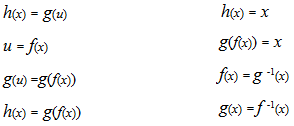
Just imagine a machine which would make triple the money you put in. When you put a coin, three coins would come out. And also, why not, a machine which would give you one third of the money you put.
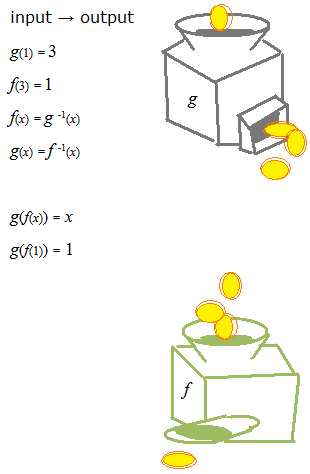
If you use these two machines together, a coin would make a coin.
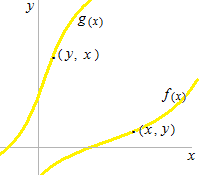
If there is a point (x, y) on f(x), there must be a point (y, x) on g(x). It results in the curves of these two functions being symmetrical with respect to line of identity function y = x .
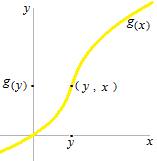
For an inverse function, the use of variable name, that is the axe’s name and the value of variable at the moment are mixed up.
Point ( y ,x ) means a certain point ( x,y ) has value y for variable x and value x for variabley . Here, g(y) means there is a certain function g(x) and the variable xtakes at this moment value y.
Sometimes an integration take vertical axis as independent variable. But when you are talking about inverse functions, always the variable on horizontal axis is in parenthesis of function.
It would have been more simple, if the point had been indicated (a,b) or (y1 ,x1) or even (u1 ,x1), but as for functions, it is not number but variable must be in parenthesis of function.
y in parenthesis of g(y) is the output answer, or image, of f(x) .
“When f(x) is y ” and ” When x of g(x) is y ” are said simultaniously.
x of g(x) is name of variable, name of horizontal axis.
y of g(y) is the value of variable x at that time.
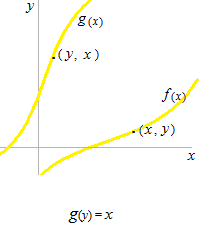
A function must be bijective, so that it can have its inverse function.
Derivatives of a pair of inverse functions.
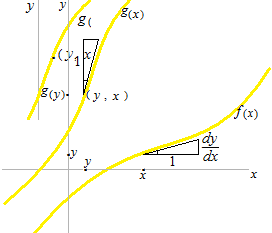
As the curves of two inverse functions are symmetrical with respect to the line of identity function y = x , triangles of their derivatives are also symmetrical.
Derivative of a composite function which is made of a pair of inverse functions is 1.
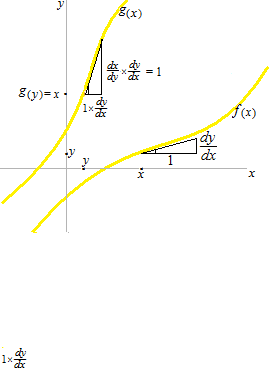
It means that 1 as dy multiplied by ∞ is different than 1 as dx multiplied by ∞. There must be two coordinate systems.
Anyway ∞ is not a number. So it is not correct to say “multply by ∞ ”
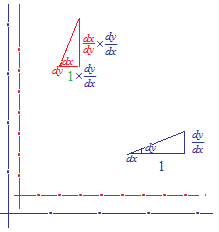
Using chain rule.
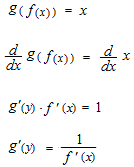
It is not same as perpendicular lines’ formula.
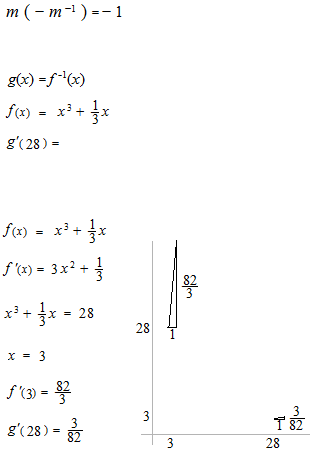
This one can be a mental calculation.
